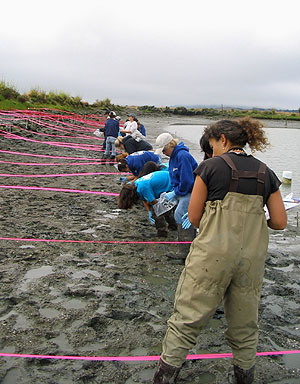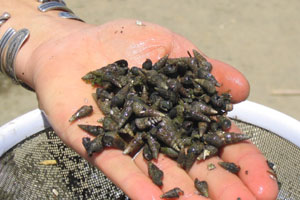 Recently there's been much in the news about the quagga mussel, a native of the Ukraine that, with its cousin the zebra mussel, has wreaked havoc in the Great Lakes and has now been found in Lake Havasu. Experts fear the mussels could find their way into the Sacramento-San Joaquin Delta-- part of what is already the most invaded estuary on earth.
Recently there's been much in the news about the quagga mussel, a native of the Ukraine that, with its cousin the zebra mussel, has wreaked havoc in the Great Lakes and has now been found in Lake Havasu. Experts fear the mussels could find their way into the Sacramento-San Joaquin Delta-- part of what is already the most invaded estuary on earth.
Invasive species arrive in the Delta and Bay through a variety of means: riding in ocean liner ballast water, hitchhiking on hulls of recreational boats, dumped from home aquariums. The sudden addition of a new variable can throw the whole ecological equation out of whack.
For example, the Asian clam, first spotted in the Bay in 1980s, has proved such an efficient filter feeder than it has contributed to crashing levels of plankton, the microscopic plants and animals that form the base of the food web. This in turn has had serious consequences for the native fish that feed on the plankton.
The best defense is preventing new invasives from becoming established. This past summer, The Bay Institute worked with scientists from UC Davis and the Smithsonian Environmental Research Center on a project to eradicate an invasive Japanese mud snail, Batillaria attramentaria, from Loch Lomond Marina in San Rafael (a project we hope to continue this year). Project lead Heidi Weiskel, a UC Davis graduate student, tells me it is the first attempt on record to eradicate a soft sediment invertebrate.
The snail is a threat because it competes with the native California horn snail and because it carries a parasite that can infect native fish. If its population were to grow too large, the snail could disrupt the mudflat ecosystem by creating a hard pavement of dead shells that can prevent shorebirds and others from foraging. So far, the snail's appearance in the Bay has been limited to Loch Lomond Marina, giving hope that it may be eradicated before it spreads to the rest of the Bay.

